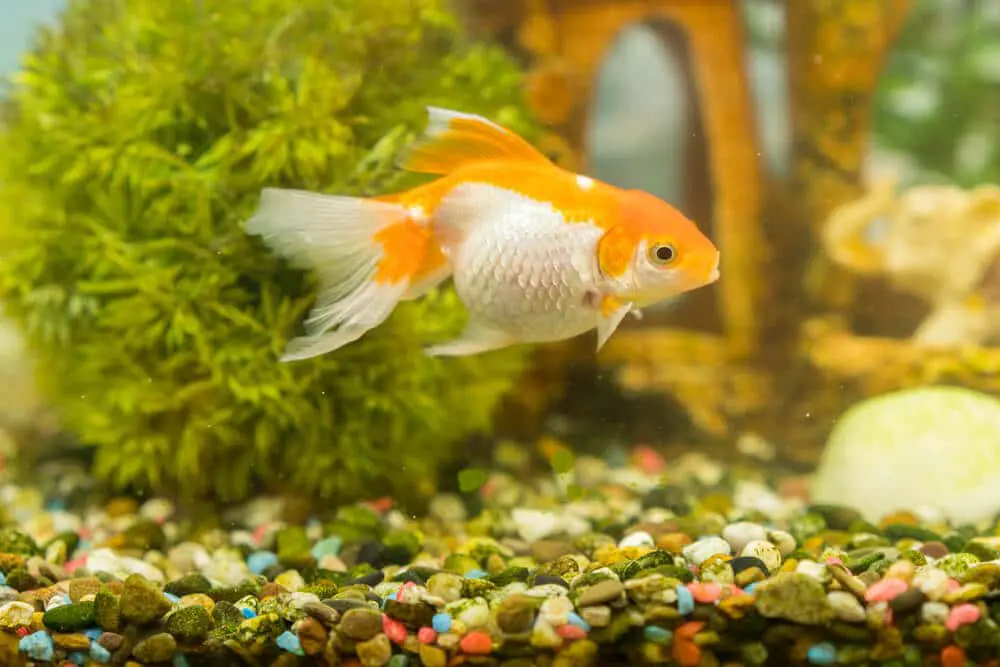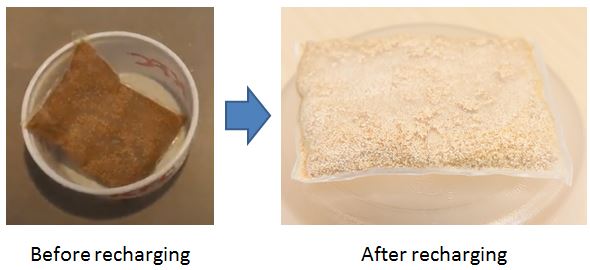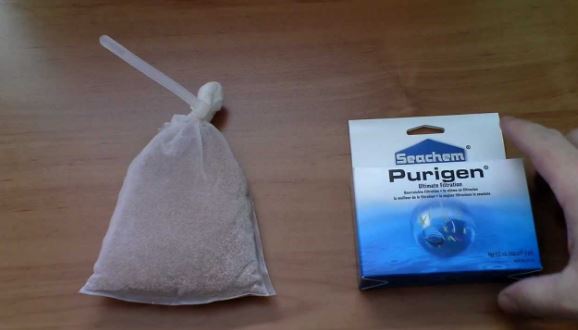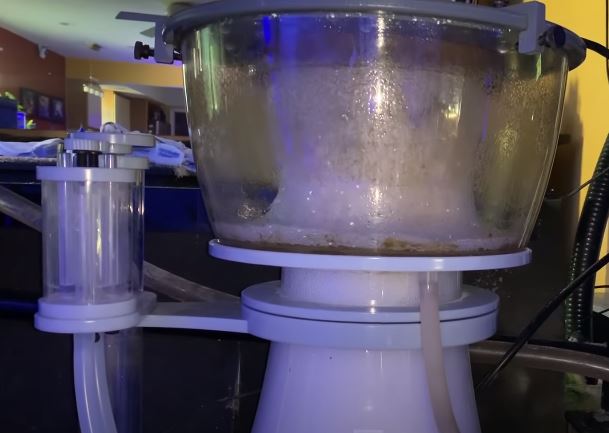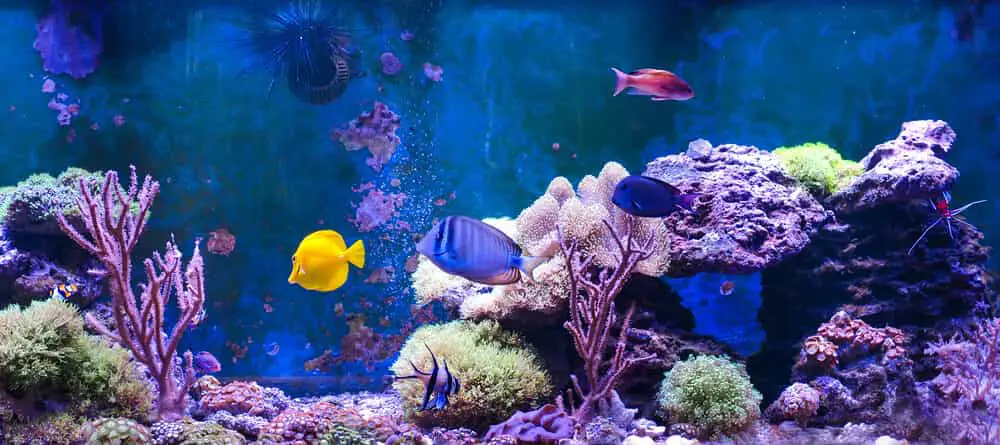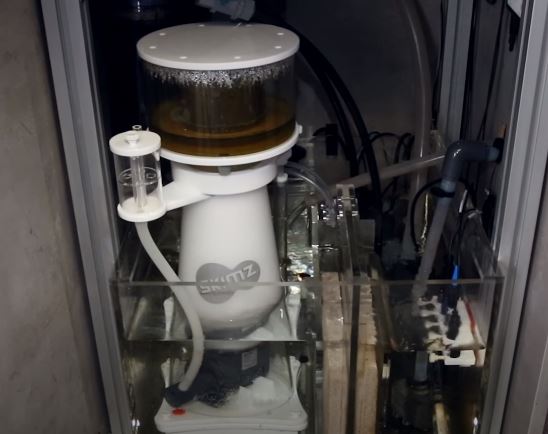Fish are our friends. My two fancy goldfish swim to the side of the tank when I enter the room just to say hello. Because I like my fish, I want them to be safe and healthy. I clean their tank, feed them nice food, and try to ensure their comfort.
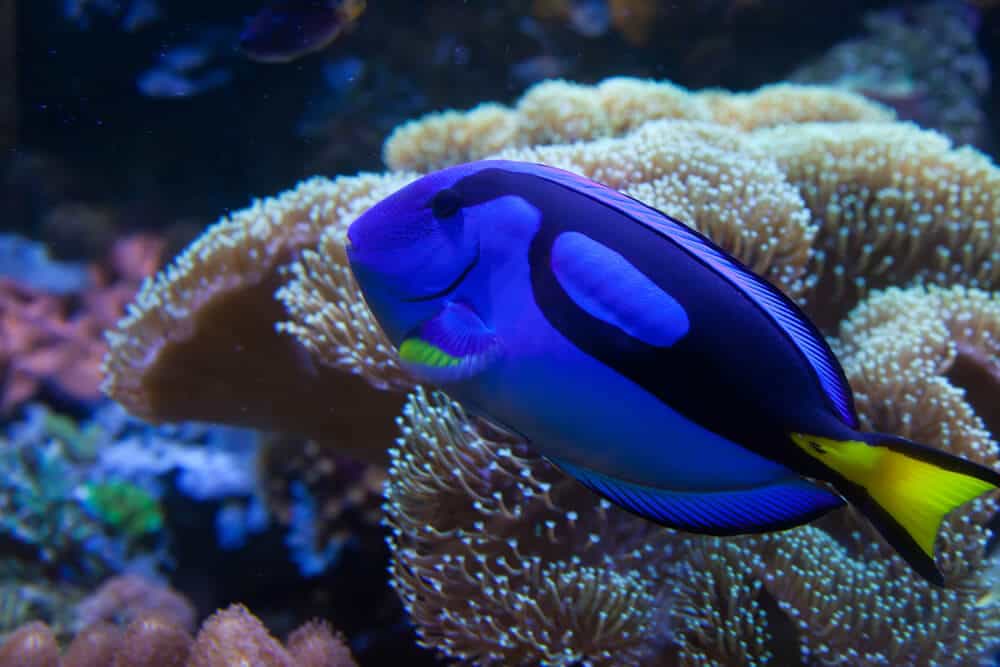
What if I’m slowly killing them, though? What if my tap water is harmful? Reverse Osmosis (RO) water for aquariums is a better choice for many people. It is very clean, pure, and can be used to create all kinds of aquatic environments.
Contents
Which water source is the best?
You can get water from many sources. Your sink produces water. Rain can be collected to add to your fish tank. Some people use well water for their aquariums. Let’s have a quick look at some options.
Tap Water Pros and Cons
Tap water is one of the best choices because it is mostly clean and cheap. People with aquariums are likely to have access to tap water. Even though it is cleaned by the government, there may still be some impurities present.
We want to be careful about chlorine and chloramine. These two chemicals are used to sanitize tap water. Both chemicals are harmful to fish. Chlorine is a cleaning chemical and chloramine is ammonia bonded to chlorine.
So, tap water is pretty clean and cheap but its quality varies widely and it might contain chemicals that could hurt your fish.
>> Additional content: Check out our guide featuring ‘The 5 Best Tap Water Conditioners‘
Rainwater is Natural but Problematic
Some people are tempted to think rain water is natural and should be pure and safe to use. This is simply not true. As rain falls through the sky, it collects minerals and pollutants. Rain water is also slightly basic, with an average pH of around 5.6 in the USA.
Rainwater can also contain any dirt or pollution found on the collection surfaces. These contaminants are even harder to predict and might be very difficult to correct.
Well Water Could Make Fish Unwell
Well water access is less common. However, even clean well water may be dangerous for fish. The real problem with water from underground is the number of contaminants it may contain. Even if it is safe to drink, it could kill your fish.
In particular, well water usually has high levels of dissolved carbon dioxide and nitrogen. Hydrogen sulfide and iron are also known to be found in well water. Aeration may remove these but the water should be tested.
>> Additional content: Check out our guide featuring ‘The Best Ways to Use Natural Well Water for Your Fish Tank‘
What is RO water and why is it the best choice for your aquarium?
RO water for aquariums is water filtered through a reverse osmosis system. While this sounds complicated, it’s not difficult to understand.
Reverse osmosis is a filtering process. Water is forced through a ‘semi-permeable membrane.’ This membrane is a filter with tiny holes. The holes are so small they only let very small molecules through them. Happily, H2O is a small molecule and almost all pollution is made of larger molecules.
So, RO water is water that has been filtered to a very high level of purity.
The advantage of using RO water as fish tank water is its purity. There should be nothing in it that can harm your fish. There will be no chlorine, no ammonia, no nitrates, and no trace elements. RO water’s purity makes it brilliant for establishing water conditions for any species of fish.
How to Correct the Limitations of RO Water
RO water does have a few limitations. Basically, it is too pure for fish. The water in your fish tank is a controlled fluid. Its parameters are monitored carefully to ensure it is the healthiest environment.
Water filtered through an RO system contains none of the buffering chemicals necessary to maintain good water quality. The simplest way to correct the limitations of RO water is to buy a solution. Let’s look at some of the specific problems and what we can do about them.
How to Remineralize Reverse Osmosis Water
One of the problems with RO water is the complete lack of trace minerals. Here is a short list of trace elements used by fish and tank invertebrates:
(Click on each trace element below to view more details on Amazon)
The list could be longer but you get the point. Fish, corals, shrimp, and snails all use different minerals. Rectifying the shortage of these minerals is easily done by purchasing a chemical additive.
How to Correct Water Hardness and Alkalinity
Water from RO systems is almost totally lacking in trace elements. The absence of calcium and magnesium messes up the hardness of the water. These compounds must be added into the water to keep fish healthy.
Because of the lack of hardness, the water isn’t buffered against sudden changes in chemistry. Even a small amount of acid or base can drastically affect the water’s pH level. So, the best bet is to buy a solution for adding calcium and magnesium to the water.
>> View solutions for adding calcium and magnesium on Amazon.com
How to Achieve the Perfect pH
In theory, RO water has a pure pH of 7.0. In practice, RO water has a very unstable pH level due to the lack of buffering minerals such as calcium and magnesium. In order to correct the pH of water, first address the hardness of the water.
After the general hardness (gH) and carbonate hardness (kH) have been corrected, the water should be tested. If it is too acidic or basic, then a chemical or compound can be added to the water to raise or lower its pH.
Don’t try to correct the pH until the hardness is at an acceptable level. The water hardness is the buffer that prevents pH from rising or falling super fast.
>> Please take a moment and read my full post about ‘Fish Tank Water pH – The Full Guide for Beginners‘
Where to Get RO Water
There are only two main options for getting your hands on some reverse osmosis water. You can buy it from your local pet store, or you can install your own aquarium reverse osmosis system.
Buying Reverse Osmosis Water
Your local aquarium store probably sells RO water. Buying it from them is good for you and good for them. It is good for you because you don’t need to set up an expensive RO water system nor do you need to install something else to maintain. It is good for your fish shop because they are doing business. This solution is ideal for people with small and medium tanks who don’t need very much water each week or month.
Buying or Building a Reverse Osmosis Water System
Aquarium RO systems can be purchased as ready-to-use units. The prices depend on the quality of the unit, the amount of water filtered per day, and the addition of a deionizing unit. We’ll talk about deionizing (DI) units in the FAQ section below. The main benefit of an off the shelf RO system is the ease of use. Everything is ready to be connected.
You can build your own RO system for a fish tank. The components are made of PVC pipe. Filters and filter media can be purchased from shops. However, by the time everything is purchased separately, assembled, and tested, you might discover the store-bought option was cheaper and more effective.
Is RO water really necessary? The Final Words
Our answer is maybe. There are certain reasons why reverse osmosis water is necessary such as:
- Establishing specific water parameters for breeding or keeping certain fish
- Correcting water when your other sources are not acceptable
If you meet one of these criteria, then an RO system for your fish tank is probably necessary. Likewise, if you keep lots of fish tanks, then an RO system could help you maintain consistent water quality in all of them.
If your water supply is clean enough and you have a few small tanks, then you can probably do fine with tap water. Test it to be sure!
>> Related post: ‘Top Rated Aquarium Test Kits For Freshwater And Saltwater Tanks (Review And Guide)‘
FAQs
We’ve tried to answer most of the common questions about RO water in the article. A few keep coming back to us, though. Here they are:
What is the pH of RO water?
In theory, 7.0. In practice, the pH of RO water is very unstable due to the lack of buffering minerals such as calcium and magnesium.
Does RO water need to be dechlorinated?
No, the filter should remove the chlorine during the reverse osmosis process. Testing the water is always wise, though.
Does goldfish tank need to use RO water?
Probably not. Goldfish, like most species, can survive in a range of water qualities. If your water source isn’t acceptable, then RO water may be the only option.
Is RO water good for your betta?
Much the same as goldfish, betta fish can survive and do well in water with a range of parameters. However, you should test the water from your tap or source and determine what it needs to be safe for your fish.
What is the difference between RO & RO/DI water?
Deionized water (DI) has passed through another filtration step to remove even more impurities from the water. This produces the purest water and is even used in science labs for testing. DI filters are included in most systems sold by fish stores and websites.
What is the best RO DI system for reef tanks?
The best RO DI system for reef tanks is the one you can afford and use. That’s a little simple, but it’s true. Look for a filter that meets these criteria:
- Produces enough water to meet your needs, including water changes, top-ups, and cleaning
- Fits into the installation space you have available
- Is within your budget
If you find a filter that meets these criteria, then it should be fine for you.
